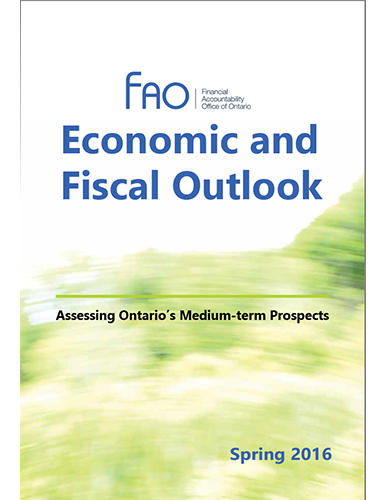Economic and Fiscal Outlook Spring 2016

This report is an in-depth review of the current economic outlook and the state of the provincial government’s finances.
Economic and Fiscal Outlook Spring 2016, Financial Accountability Office of Ontario, 2016.

